News
Kaduna drone tragedy: Tudun Biri rises from the ashes with government, military interventions
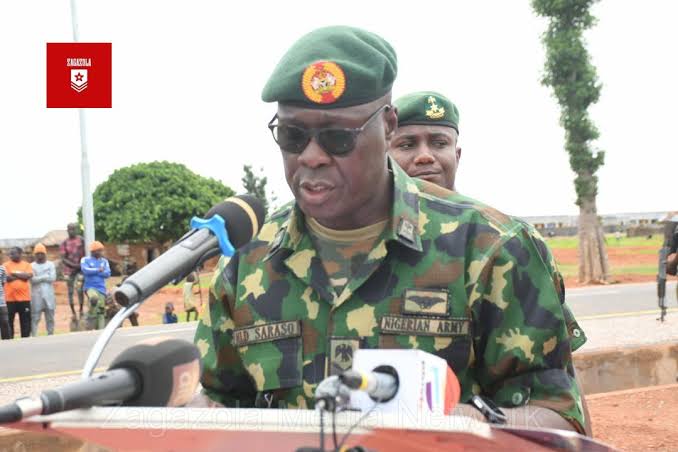
Kaduna drone tragedy: Tudun Biri rises from the ashes with government, military interventions
By: Zagazola Makama
What was once a community lost in silence, rubble and grief is today a beacon of hope and transformation. Tudun Biri, a sleepy rural settlement in Igabi Local Government Area of Kaduna State, is gradually emerging from the shadows of devastation.
On the night of Dec. 3, 2023, more than 80 villagers many of them women and children were killed when a Nigerian military drone, deployed in an anti-banditry operation, mistakenly struck the community as residents gathered in joy to celebrate Maulud Nabiyy, the birth of Prophet Muhammad (SAW). The incident ignited a nationwide wave of grief, prompting urgent reflections on military accountability, civilian safety, and the dire consequences of misidentification in conflict zones.
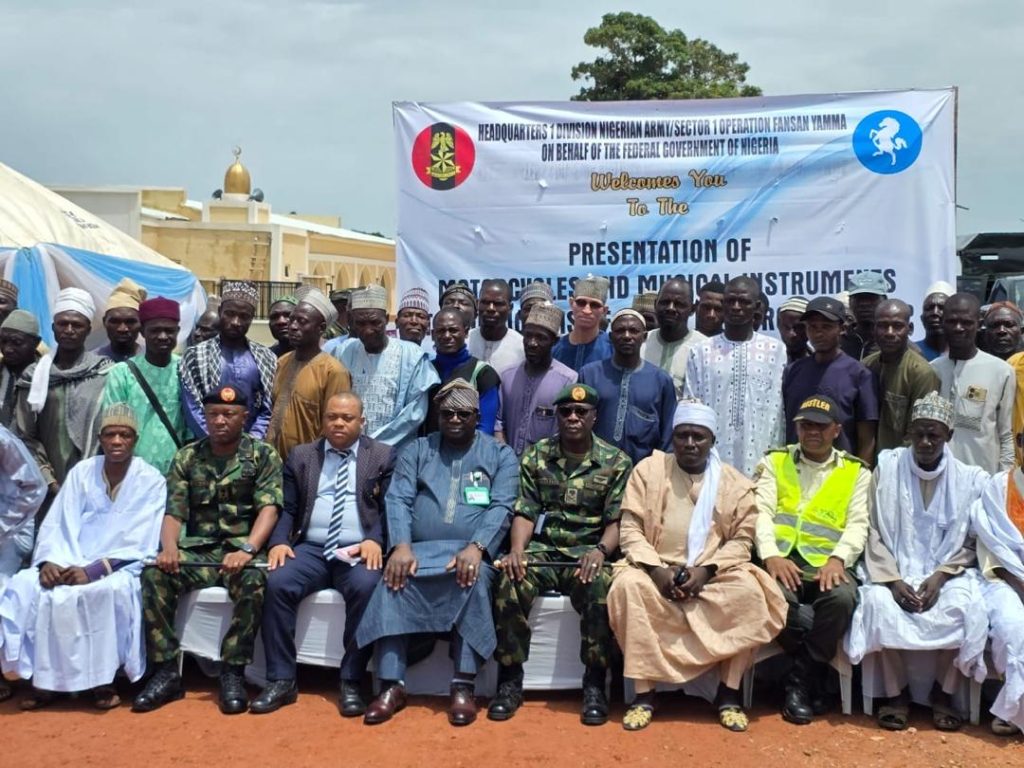
Nearly one year six months later, the once-neglected Tudun Biri is being transformed from a forgotten rural settlement into a model of post-conflict recovery, through massive reconstruction and empowerment projects, thanks to far-reaching interventions by the Federal Government, Kaduna State Government and the Nigerian Army.
Before the incident, Tudun Biri had little to no presence of government. The village lacked basic infrastructure: no healthcare centre, no road network, no school, no water supply, and no form of economic empowerment facility.
For months, the village was shrouded in pain.
But amidst the despair, something remarkable began to unfold a movement of resilience and renewal. The Nigerian government, the Kaduna State authorities, and the Nigerian Army responded not with indifference but with purpose and compassion. Today, new sounds echo through Tudun Biri: the hum of solar-powered streetlights, the chants of children playing, the buzzing of machines in a skills centre, the well equipped healthcare facility and the quiet resolve of a people rebuilding with pride.
Malam Balarabe Garba, the Village Head of Tudun Biri, said that the people of the community now walks through paved streets lined with solar-powered streetlights, far removed from the dusty, neglected paths of the past.
“Before this tragedy, no one knew Tudun Biri. There was no road, no school, no hospital. But today, we are being heard,” he said, his voice thick with emotion. The government has built over 140 houses, the state constructed a modern hospital, and the Nigerian Army gave us a school. This is a new beginning for us.”
The new 25-bed hospital, fully equipped with surgical and ophthalmological units, was built by the Kaduna State Government, offering services that were once unreachable without a long, costly journey to town.
The Chief Imam of Tudun Biri, Malam Hashim Ja’afaru, stood in front of a new mosque built after the tragedy. “This mosque means a lot to us. It stands near the same ground where we buried our loved ones,” he said.
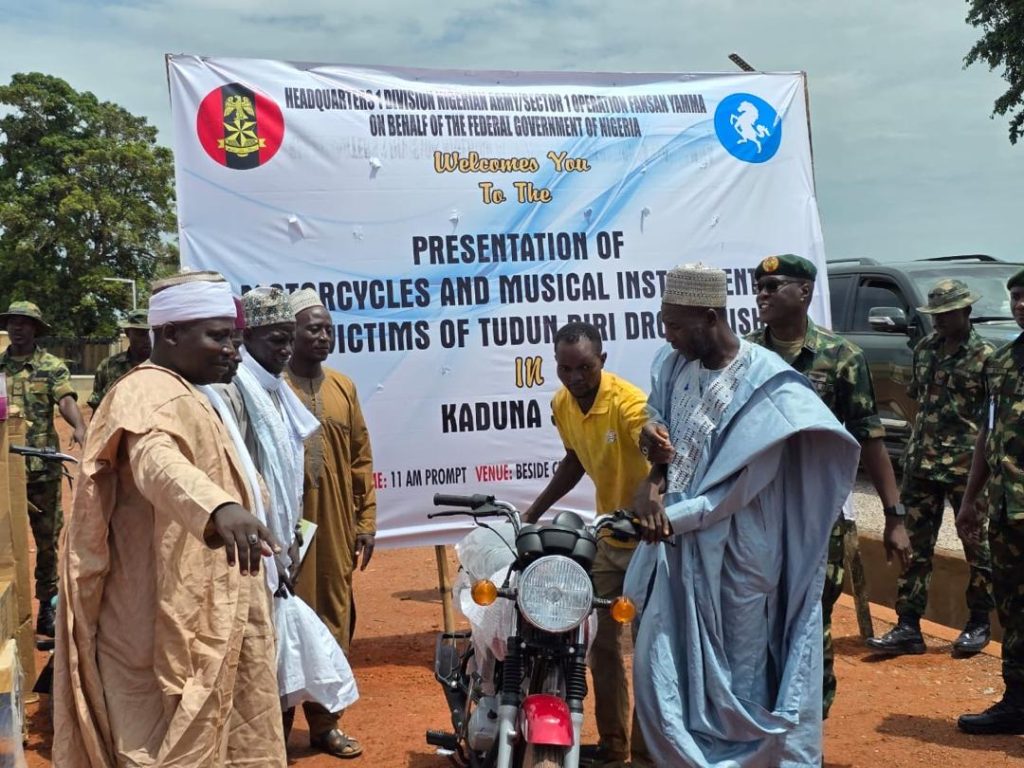
“But beyond the mosque, the government fulfilled many of its promises. They gave us water, electricity, roads, a school, and even security. The new central mosque tells a story deeper than its bricks and mortar.
“The government built us this mosque. It is a symbol of respect for the lives we lost, and a promise that we are not forgotten. When they said they would rebuild our lives, we were not sure. But now we have a hospital, houses, a school, and security. They have done what they promised. That is why we are grateful.”
He particularly praised the Pulako Initiative, introduced by President Bola Ahmed Tinubu, which is driving much of the rural transformation in the village including clinics, empowerment initiatives, solar energy, and shelter projects.
Abdullahi Danjuma, a 52-year-old farmer, recalled how his life fell apart after losing his two relatives in the blast. “I had nothing left. But the government is rebuilding 140 houses for us . They also gave compensation to those who lost other valuables and ensured more security in this area. Now I can farm and take my produce to market,” he said.
He commended the Federal Government for its “immediate and practical response,” saying the presence of authorities helped restore dignity to the grieving.
“People said politicians forget villages like ours. But here in Tudun Biri, they kept coming. And today, we are seeing real development. We feel seen, at last,” he added.
For Hajara Musa, a food vendor and mother of four, the newly constructed five-kilometre asphalt road is a blessing she never imagined.
“Before this road, I used to walk with a basin on my head to sell food. Vehicles never came here. But now, buses and bikes enter our village. I make more sales and my children now go to school easily,” she said.
She expressed appreciation to Governor Uba Sani of Kaduna State, who visited the village shortly after the incident and promised infrastructure, schools and water.
“Governor Sani promised and he delivered. Our school is ready. Our hospital is functioning. And we now have boreholes and solar water pumps,” Hajara said.
However, the latest phase of support came from the General Officer Commanding 1 Division Nigerian Army and Commander Sector 1 Operation Whirl Punch, Maj.-Gen. Lander Saraso, who on behalf of the Federal Government, distributed motorcycles, musical instruments, and other relief items to families that suffered losses.
“We are here today to support the survivors of that tragic incident and fulfil the commitment made by the Federal Government and the Nigerian Army,” Saraso said during the presentation.
Gen Saraso said the gesture was in fulfillment of the recommendation of a high-level federal government delegation, including the former Chief of Army Staff, late Gen Lagbaja, of blessed memory, that visited the community in the aftermath of the incident.
This is not just about items; it is about rebuilding trust, healing, and continuing our engagement with the good people of Tudun Biri. These motorcycles and instruments are not just items, they are tools to help families get back on their feet.”he said.
Among the items presented were 2 motorcycles, a corolla generator, 2 wireless microphones, Single power amplifier mixer and 500 watts flood lights, which were given to the beneficiaries including Isuwa Haruna, Ridwan Yakubu and Isah Ahmed.
He added that the Army’s continued presence in the community was part of its strategy to rebuild trust, enhance security, and prevent recurrence of such incidents.
According to him, the Nigerian Army under the leadership of Lt Gen Olufemi Oluyede takes the issue of community relations very seriously, as the Army recognizes the indispensability of the support and partnership with the people and the community in the success of its operations.
Saraso further noted that the Army had constructed a school, facilitated community sanitation, cleared farmlands, and rebuilt damaged residential structures as part of its contribution to the village’s healing process.
“This effort is part of the broader federal response to ensure that Tudun Biri is not only remembered for the tragedy but recognised for how it rose beyond it,” he added.
Kaduna State’s Commissioner for Internal Security, Dr. James Kanyip, underscores the importance of resilience and assured the community of the State Government’s continued support. “We stand with Tudun Biri, and we will ensure they remain safe and supported. Their recovery is our collective responsibility.”he said.
He commended the Nigerian Army for its proactive outreach and reaffirmed the government’s commitment to long-term rehabilitation and assistance for the victims.
In the heart of Tudun Biri, hope is taking root where grief once reigned. The mosque calls to prayer, children’s voices rise from the playing ground. Though the scars of December 3 may never fully heal, the village is learning to live again stronger, prouder, and with purpose.
The coordinated interventions of the Federal Government, Kaduna State Government, and the Nigerian Army have not only restored lives they have restored faith. From tragedy has emerged a template for compassionate recovery.
Zagazola Makama is a Counter Insurgency Expert and Security Analyst in the Lake Chad Region
Kaduna drone tragedy: Tudun Biri rises from the ashes with government, military interventions
News
Zulum commissions remodelled ‘2nd chance school’ for vulnerable girls

Zulum commissions remodelled ‘2nd chance school’ for vulnerable girls
.Disburses N1bn to SMEs in 5 LGAs
By: Our Reporter
Borno State Governor, Professor Babagana Umara Zulum, on Thursday commissioned a fully remodelled “Second Chance School” for vulnerable girls and women in Biu Local Government Area.
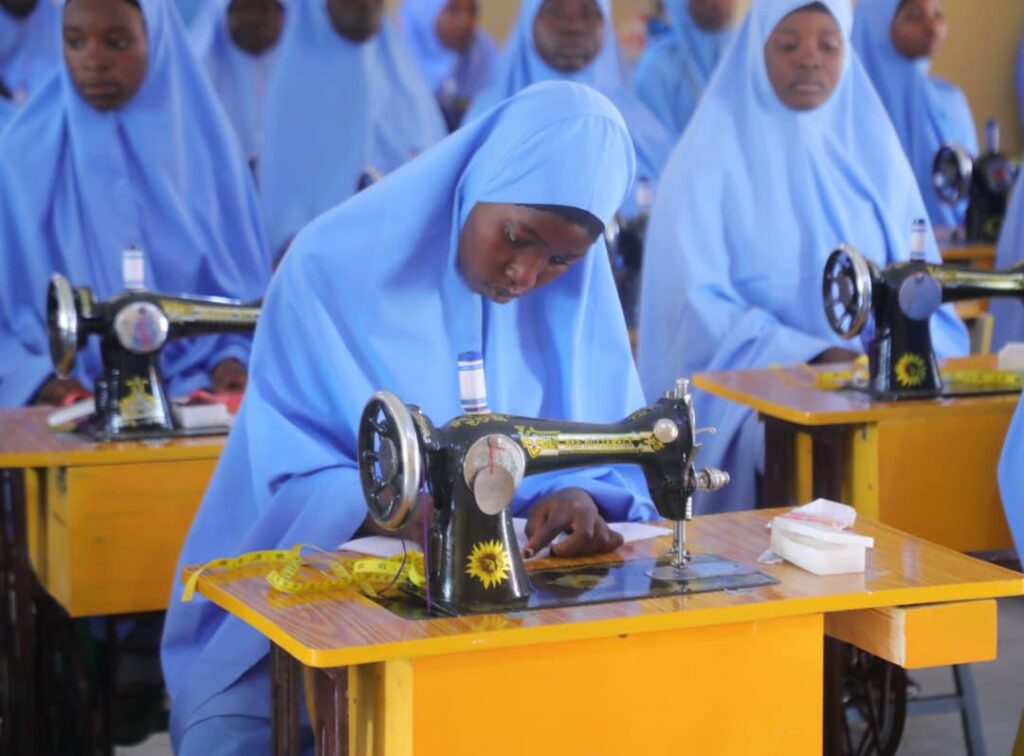
The newly inaugurated facility is part of a strategic initiative designed to offer adult women, including those who missed formal education or dropped out of school due to prevailing challenges, a pathway to self-reliance.
The school’s curriculum is tailored towards providing comprehensive skills’ acquisition, critical digital knowledge and basic literacy, and numeracy training.
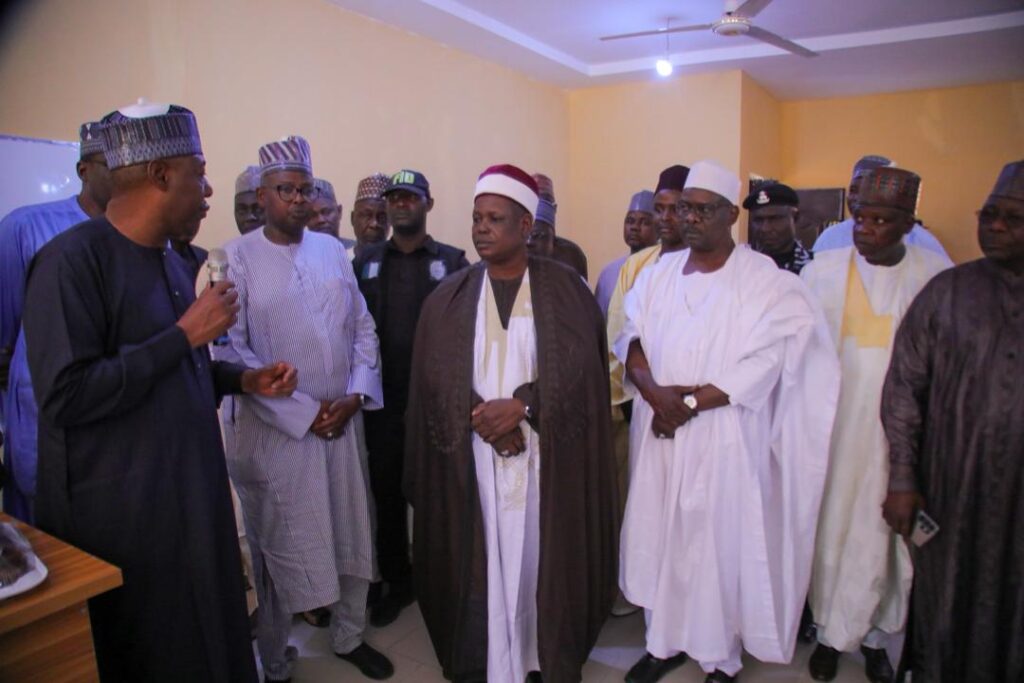
With the Biu centre now operational, Zulum’s administration has established three such schools across the state, with existing centres already operational in Maiduguri and Bama.
Meanwhile, Governor Zulum has disbursed N1 billion to small and medium-scale enterprises (SMEs) across five local government areas in southern Borno.
The targeted LGAs include Biu, Hawul, Shani, Bayo and Kwaya-Kusar, with the funds intended to support entrepreneurs and enhance business sustainability.
Zulum explained that the direct injection of capital into the SME sector is essential for driving grassroots development and fostering self-reliance in the post-insurgency recovery phase.
In a related development aimed at tackling youth restiveness and promoting social stability, Governor Zulum has ordered immediate employment of 200 young individuals from the Biu Local Government Area.
After the inauguration, Zulum visited Biu Specialist Hospital where he announced the immediate and automatic employment of a number of dedicated volunteer health workers who have served tirelessly.
He also inspected the 100-unit teachers’ housing estate under construction in Biu town. The estate is part of the Borno State Government’s motivational strategy to attract and retain qualified teaching professionals in public schools.
Governor Zulum has also directed immediate commencement of rehabilitation work on the Borno State Hotel Annexe in Biu.
Zulum commissions remodelled ‘2nd chance school’ for vulnerable girls
News
Environment Minister Calls for Inter-Agency Collaboration to Address Environmental Challenges

Environment Minister Calls for Inter-Agency Collaboration to Address Environmental Challenges
By: Michael Mike
The Minister of Environment, Balarabe Abbas Lawal, has urged enhanced inter-agency collaboration to tackle environmental challenges across Nigeria.
The call was made during a meeting with the Director-General of the National Hydro-Electric Power Producing Areas Development Commission (N-HYPPADEC), Abubakar Sadiq, and his team at the Ministry’s Abuja office.
Highlighting potential areas of cooperation, Lawal emphasized the importance of climate-resilient water supply and sanitation (WASH) programs aimed at ensuring year-round access to safe, reliable, and clean water in communities affected by dam operations. He noted that such collaboration would not only improve access to safe drinking water but also reduce the prevalence of water-borne diseases in these areas.
On energy initiatives, the Minister discussed the distribution of clean cooking stoves to households in hydro-basin communities, stressing that this would significantly reduce household energy poverty, deforestation, and emissions through the adoption of energy-efficient cooking technologies.
Other proposed collaboration areas between the Ministry and N-HYPPADEC include erosion and flood management, ecosystem restoration, climate-resilient afforestation programs, youth and community engagement, job creation, and public awareness campaigns.
In his remarks, Abubakar Sadiq described N-HYPPADEC as a strategic partner of the Federal Ministry of Environment, outlining the commission’s impactful interventions across water supply, sanitation, housing, youth empowerment, water transport safety, and institutional strengthening. He also commended the Ministry for its prompt response to flood-prone areas, erosion challenges, and pollution management.
N-HYPPADEC maintains offices in Lokoja, Birnin Kebbi, Ilorin, Lafia, Jos, Gombe, Jalingo, Makurdi, Kaduna, with its headquarters in Minna, Niger State.
Environment Minister Calls for Inter-Agency Collaboration to Address Environmental Challenges
Health
Health Worker Exodus Deepens as Policy Brief Warns of Systemic Risk to Nigeria’s Healthcare Sector

Health Worker Exodus Deepens as Policy Brief Warns of Systemic Risk to Nigeria’s Healthcare Sector
By: Michael Mike
A new policy brief has warned that unless urgent welfare-focused reforms are implemented, the country risks a deepening crisis that could undermine access to quality healthcare nationwide.
Nigeria’s healthcare system is facing mounting pressure as the steady departure of doctors and nurses continues to erode service capacity, raising concerns about long-term system viability.
According to the policy analysis authored by health policy expert Dr Emmanuel Ejimonu, of the Athena Centre for Policy and Leadership, more than 42,000 nurses left Nigeria between 2021 and early 2024, while thousands of Nigerian-trained doctors have registered to practise abroad, particularly in the United Kingdom. The trend shows no sign of slowing, as survey data cited in the report indicate that nearly three-quarters of medical and nursing students intend to seek employment overseas, with about one in three expressing no plans to return.
The report attributed the exodus largely to domestic welfare and governance challenges rather than professional ambition. Health workers interviewed consistently pointed to low and irregular salaries, unsafe and overstretched working environments, limited opportunities for funded specialist training and weak social protection systems. These challenges, the brief notes, have made emigration a rational choice in the face of institutional uncertainty, especially as global demand for health professionals continues to rise.
Although the Federal Government introduced a National Policy on Health Workforce Migration in 2023 to promote ethical recruitment and retention, the brief argues that its impact has been limited. Implementation gaps, inadequate funding and uneven execution at state and facility levels have prevented the policy from delivering meaningful improvements in working conditions.
The consequences of sustained health worker losses are already visible. Teaching hospitals are reportedly struggling to maintain specialist training and mentorship programmes, while recurring strikes highlight growing mistrust between health workers and government authorities. Economically, the country is losing returns on public investments in training, even as staff shortages compromise care delivery in both urban and rural facilities. Remaining workers also face rising burnout, further fuelling migration intentions.
Drawing on international experiences from countries such as Ghana, Kenya, the Philippines and Cuba, the policy brief stresses that health worker migration cannot be completely stopped. Instead, it recommends managing mobility through welfare-based retention strategies and credible governance structures.
Central to the recommendations is a proposed Welfare-First Retention Package, which prioritises guaranteed and timely payment of salaries, improved workplace safety, funded career progression, fair bonding arrangements and strengthened social protection. The package also calls for disciplined use of bilateral agreements and ethical recruitment frameworks to protect Nigeria’s investment in health worker training.
The brief estimates that, if properly funded and implemented, the proposed measures could reduce short-term health worker attrition by up to one-third within two years, while significantly improving retention over a five-year period.
The report stated that reversing the health workforce crisis will require treating welfare reform as a core economic and governance priority, backed by political will, fiscal discipline and strong institutional coordination. Without such action, the report warns, Nigeria risks the gradual hollowing out of its healthcare system, with far-reaching consequences for public health and national development.
Health Worker Exodus Deepens as Policy Brief Warns of Systemic Risk to Nigeria’s Healthcare Sector
-

 News2 years ago
News2 years agoRoger Federer’s Shock as DNA Results Reveal Myla and Charlene Are Not His Biological Children
-

 Opinions4 years ago
Opinions4 years agoTHE PLIGHT OF FARIDA
-

 News9 months ago
News9 months agoFAILED COUP IN BURKINA FASO: HOW TRAORÉ NARROWLY ESCAPED ASSASSINATION PLOT AMID FOREIGN INTERFERENCE CLAIMS
-

 Opinions4 years ago
Opinions4 years agoPOLICE CHARGE ROOMS, A MINTING PRESS
-
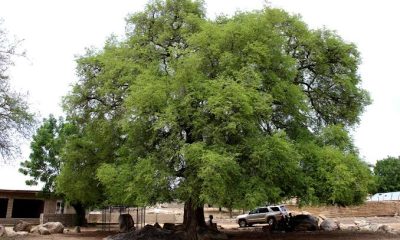
 News2 years ago
News2 years agoEYN: Rev. Billi, Distortion of History, and The Living Tamarind Tree
-
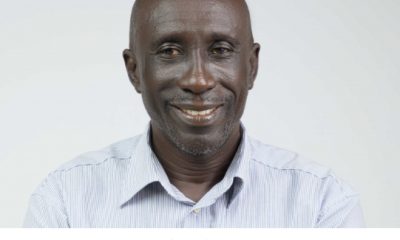
 ACADEMICS2 years ago
ACADEMICS2 years agoA History of Biu” (2015) and The Lingering Bura-Pabir Question (1)
-

 Columns2 years ago
Columns2 years agoArmy University Biu: There is certain interest, but certainly not from Borno.
-

 Opinions2 years ago
Opinions2 years agoTinubu,Shettima: The epidemic of economic, insecurity in Nigeria





